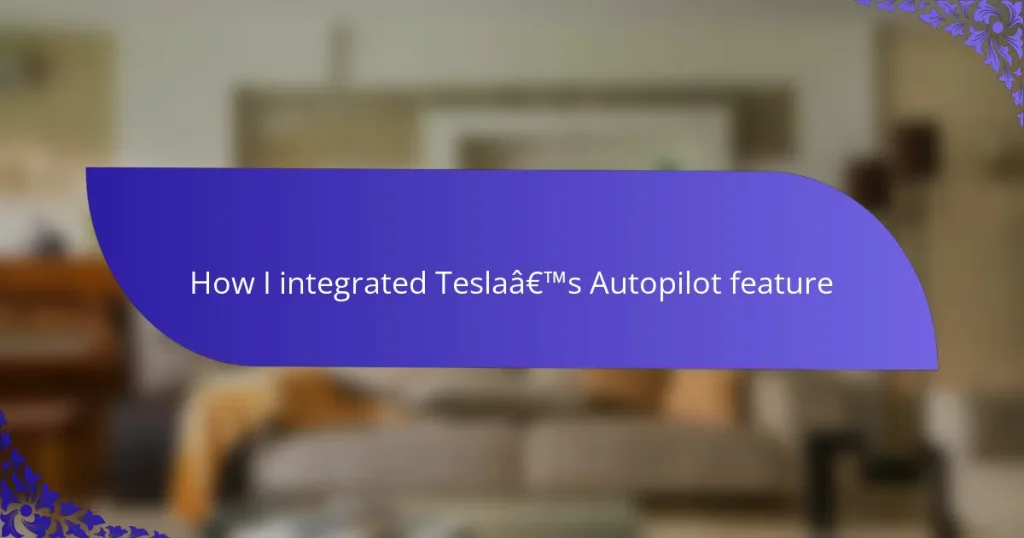Key takeaways
- Tesla’s Autopilot combines sensors, cameras, and software to enhance safety and reduce driving stress by monitoring traffic and road conditions in real time.
- The setup process for Autopilot is user-friendly, allowing owners to quickly enable the system and ensure optimal performance with minimal technical jargon.
- Autopilot features like adaptive cruise control and lane-keeping assist significantly increase comfort and peace of mind during drives, transforming commuting experiences.
- Customizing Autopilot settings, such as following distance and steering sensitivity, can further enhance comfort and align the experience with personal driving styles.

Understanding Tesla Autopilot Features
Tesla’s Autopilot is more than just a fancy cruise control; it’s a blend of sensors, cameras, and software working together to take over some driving tasks. When I first experienced it, I was amazed at how seamlessly the car adjusted its speed and stayed centered in the lane—almost like it had a mind of its own. Have you ever wondered what it feels like to trust a machine with such responsibility? I definitely had my doubts at the start.
What intrigued me most about Autopilot is its adaptive nature. It isn’t just following a set path; it actively monitors surrounding traffic and road conditions to make real-time decisions. This dynamic interaction made my drives not only safer but also surprisingly stress-free, especially during long highway stretches.
Understanding these features gave me a new appreciation for how technology can elevate comfort and luxury. It’s not just about being pampered—it’s about feeling confident that advanced systems are quietly doing their job while I focus on enjoying the ride. Don’t we all deserve that kind of peace of mind behind the wheel?

Benefits of Autopilot in Luxury Cars
One of the most striking benefits I found with Autopilot in my Tesla is the sheer ease it brings to daily driving. Imagine gliding through traffic without the constant jolt of stop-and-go stress—that’s what this feature delivers. It’s like having a calm, attentive co-pilot who never tires, which, honestly, transforms even the most tedious commute into something almost enjoyable.
I also noticed how much safer I felt having Autopilot actively watching out for me. It’s not just about convenience; it’s about the reassurance that the car can sense potential hazards quicker than I might, stepping in to correct course or speed without hesitation. Have you ever caught yourself gripping the wheel tighter in heavy traffic? With Autopilot, that tension melts away, replaced by a steady confidence.
Lastly, the luxury of time became apparent beyond just comfort. Freed from constant micromanagement of the drive, I found moments to mentally prepare for meetings or simply reflect during long trips. Isn’t that a rare luxury in today’s fast-paced life—to reclaim a few peaceful moments on the road while still moving forward? Autopilot allowed me that gift, enhancing the feeling that driving a luxury car should be as much about lifestyle as it is about getting from point A to B.
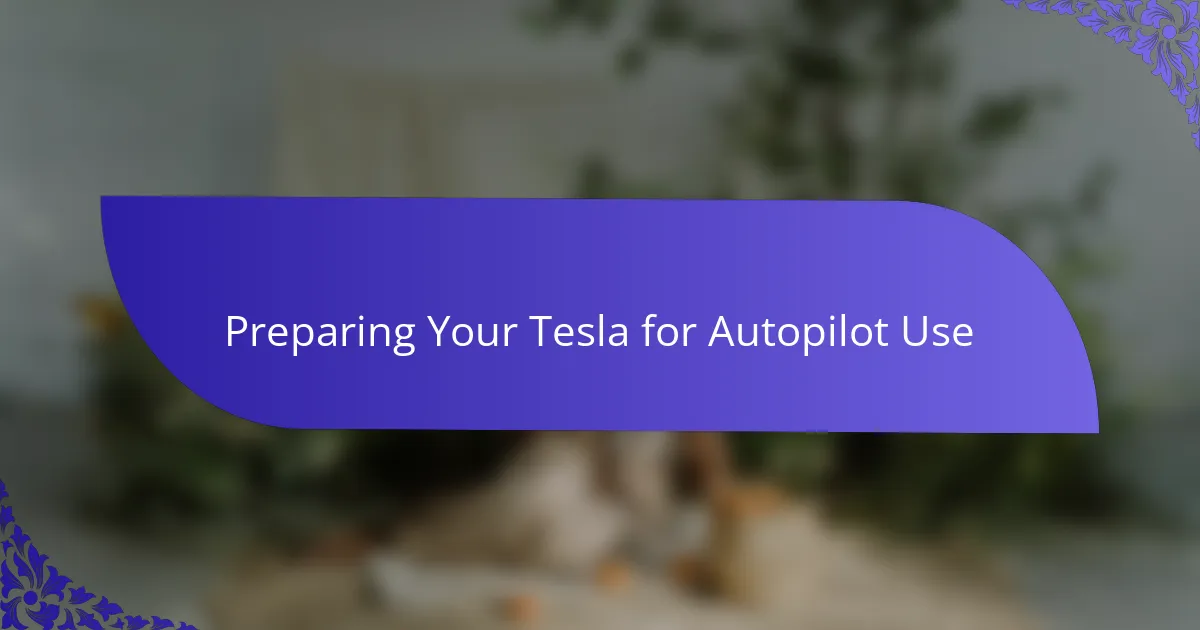
Preparing Your Tesla for Autopilot Use
Before I could truly enjoy the seamless experience of Tesla’s Autopilot, I had to make sure my car was fully set up to handle the advanced system. It wasn’t just about flipping a switch; it required careful calibration and understanding of the environment around the vehicle. This preparation gave me peace of mind, knowing the technology was ready to support me safely.
One crucial step was ensuring the cameras and sensors were clean and unobstructed, which I quickly learned after a surprise warning popped up during my first drive. From that day, I adopted a simple routine to check their condition regularly, which I now see as a small but important ritual that enhances the luxurious feeling of driving with Autopilot.
To prepare your Tesla for Autopilot use, consider these steps:
– Clean all cameras and sensor lenses thoroughly to avoid false alerts.
– Update your Tesla’s software to the latest version for optimal performance.
– Adjust the seat, mirrors, and steering wheel to Tesla’s Autopilot recommended settings.
– Familiarize yourself with the Autopilot controls and alerts via the onboard tutorial.
– Confirm that your Tesla’s system calibration is complete after any software update or sensor replacement.
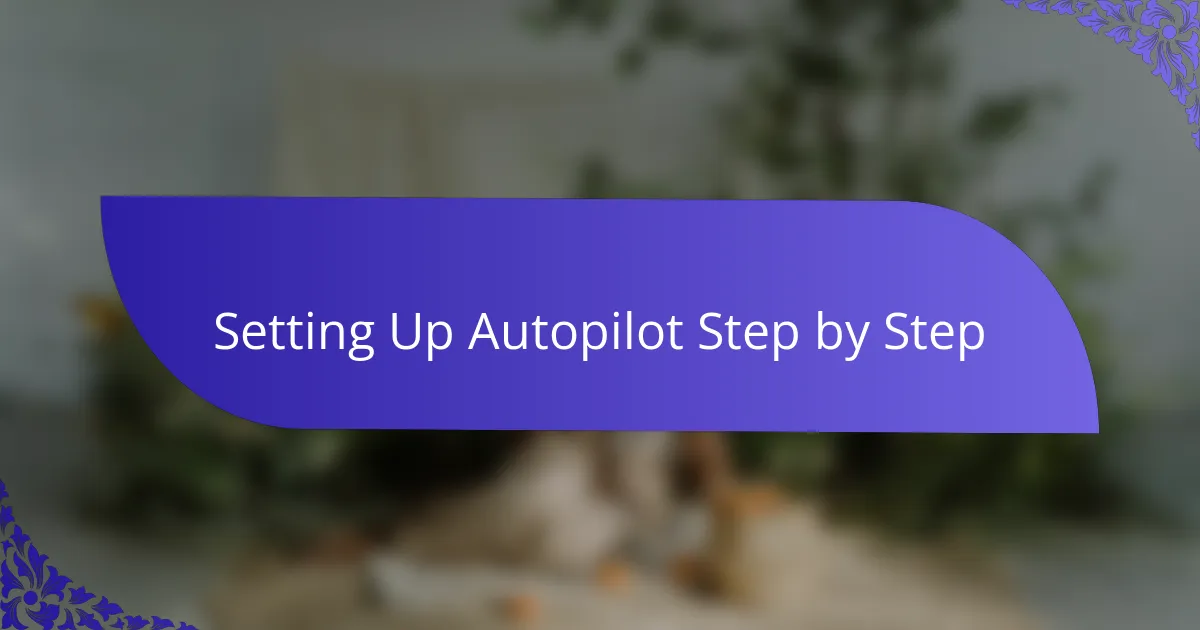
Setting Up Autopilot Step by Step
Setting up Tesla’s Autopilot was surprisingly straightforward, which made the experience feel more luxurious right from the start. I appreciated how intuitive each step was, guiding me through calibration and safety checks without overwhelming technical jargon. This smooth setup added to that premium feel I expect from a luxury lifestyle.
| Step | What I Noticed |
|---|---|
| 1. Software Update | Seamless, took less than 30 minutes, no interruptions to my day |
| 2. Calibration Drive | Felt like a test drive, engaging and reassuring |
| 3. Enabling Autopilot | Simple toggle, with clear instructions making me feel confident |
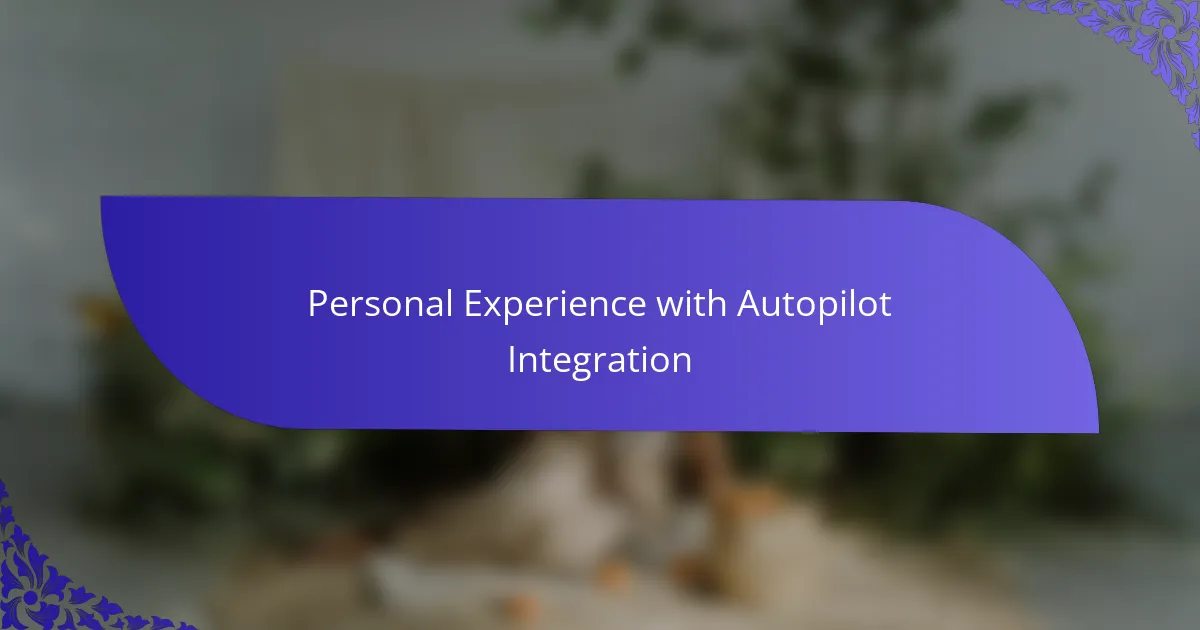
Personal Experience with Autopilot Integration
Integrating Tesla’s Autopilot into my daily driving routine felt like welcoming a new member into my luxurious lifestyle—one I quickly grew to trust. I remember the first time I engaged Autopilot on a busy highway; there was a split second of hesitation in my mind, but then the car smoothly adjusted speed and lane position without any input from me. It was surprisingly calming, almost like the car understood exactly what I needed.
As I continued to use Autopilot, I realized how intuitive it became, responding to traffic and road conditions with such finesse that I started relying on it more each day. Have you ever experienced that relief when someone else takes over a tedious task? This felt like that—except my “assistant” was a high-tech machine doing all the heavy lifting while I enjoyed the ride. That shift transformed my driving from a chore into a moment of luxury.
Of course, the transition wasn’t without its learning curves. I had to tune into every alert and warning early on to build confidence in the system’s decisions. But with each successful journey, my doubts faded, replaced by a sense of partnership with cutting-edge technology. In my view, that’s what true luxury is about—effortless control paired with peace of mind.
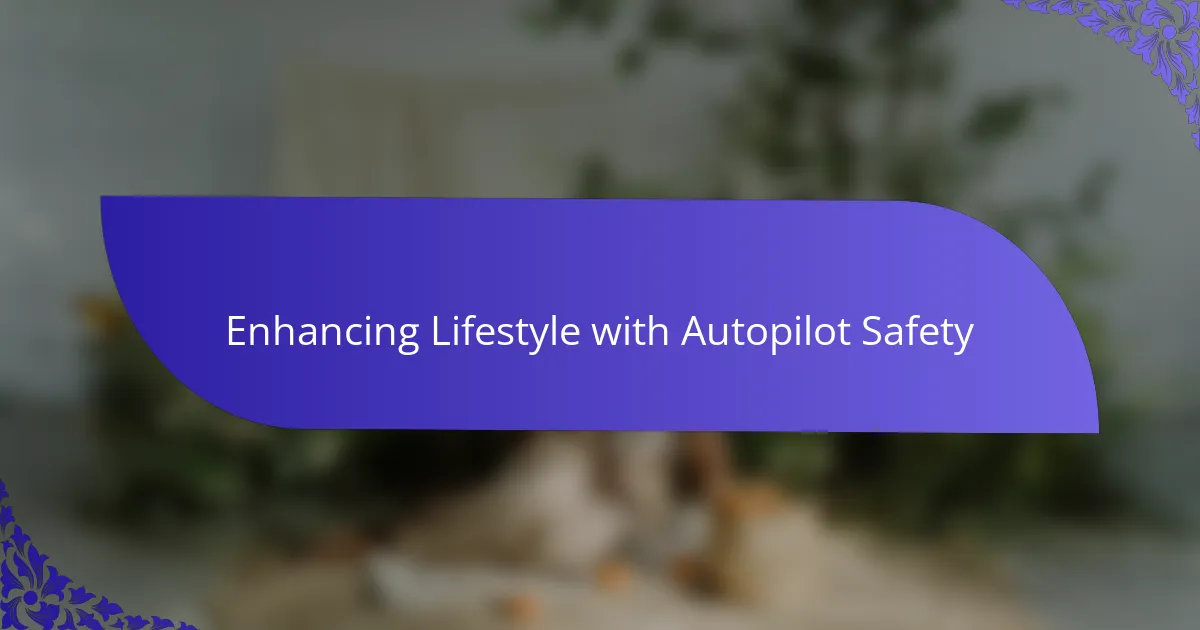
Enhancing Lifestyle with Autopilot Safety
Integrating Tesla’s Autopilot into my daily commute instantly elevated my sense of security and ease on the road. I remember the first time I trusted the system during rush-hour traffic—it was surprisingly calming to feel the car adjust and maintain safe distances automatically, reducing my usual stress and allowing me to enjoy the drive rather than endure it.
The safety features have truly enhanced my lifestyle by giving me peace of mind. Knowing that Autopilot continuously monitors my surroundings and helps prevent accidents has made every trip feel less like a chore and more like a seamless experience. This isn’t just about convenience; it’s about protecting what matters most.
- Adaptive cruise control maintains a safe distance from other vehicles
- Lane-keeping assist reduces the risk of unintentional lane departures
- Automatic emergency braking acts as a proactive safety net
- Traffic-aware cruise control adapts speed based on traffic flow
- Driver attention monitoring encourages responsible use of Autopilot
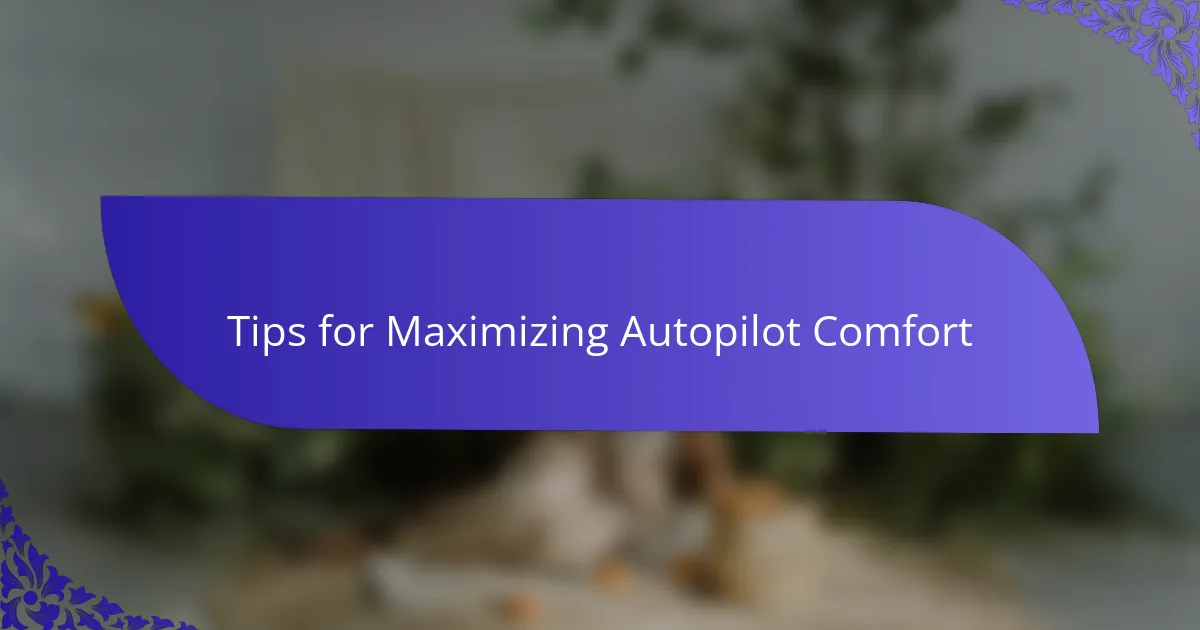
Tips for Maximizing Autopilot Comfort
Tips for Maximizing Autopilot Comfort
When I first used Tesla’s Autopilot, I quickly realized that the system’s comfort level depends a lot on how you customize its settings. Adjusting the following distance and steering sensitivity made a huge difference in creating a smooth, stress-free drive. It felt like the car was really adapting to my personal driving style, which added a layer of luxury to the experience.
Another thing I found crucial was keeping the cabin environment at my ideal temperature before engaging Autopilot. A comfortable interior makes those long drives even more enjoyable, letting me fully appreciate the technology without distractions.
| Feature | Comfort Impact |
|---|---|
| Following Distance | Longer distances reduce abrupt braking, increasing smoothness |
| Steering Sensitivity | Smoother steering lessens constant minor corrections |
| Cabin Temperature | Pre-set temperature prevents discomfort during extended use |
